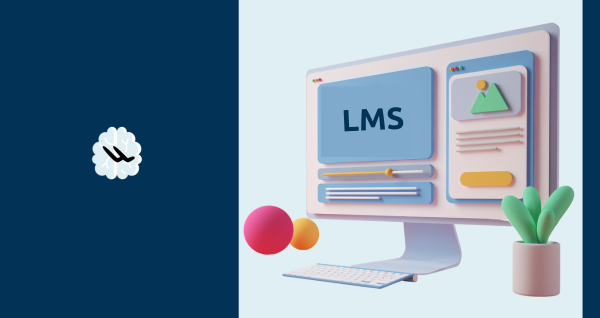
Artikel
04
oktober
Successful implementation of an LMS: the essential steps
Effective implementation of a Learning Management System (LMS) is essential for improving learning and development in your organization.
After you’ve finally made the decision to replace your old learning system with a new one, or to implement an LMS, here are ten essential best practices for successful LMS implementation after selecting the essential criteria to consider.
1. Clearly Define Objectives and Goals:
Start by identifying the specific objectives and goals you aim to achieve with the LMS, such as improving employee skills, reducing training costs, or increasing compliance rates.
2. Engage Stakeholders:
Involve key stakeholders from various departments (HR, IT, management, and end-users) in the planning and decision-making process to ensure alignment with organizational needs.
3. Thorough Needs Assessment:
Conduct a comprehensive needs assessment to understand the current learning landscape, identify gaps, and determine the content and functionality required.
4. Select the Right LMS:
Choose an LMS that aligns with your organization’s objectives and technical infrastructure. Consider factors like scalability, usability, reporting capabilities, and support that offers an LMS like LiveLearn.

5. Plan and Prepare Content:
Develop a content strategy that includes creating, curating, or purchasing relevant training materials.
Ensure content is well-organized, up-to-date, and compatible with the LMS.
6. User Training and Onboarding:
Provide comprehensive training to administrators, instructors, and learners to ensure they can effectively use the LMS.
Offer ongoing support and resources to help users get started and troubleshoot issues.
7. Customize and Brand the LMS:
Customize the LMS interface to reflect your organization’s branding and culture.
Make sure the user experience is intuitive and visually appealing.
8. Integration and Compatibility:
Ensure that the LMS integrates seamlessly with existing systems and tools, such as HR software, SSO solutions, or other third-party applications.
9. Testing and Quality Assurance:
Conduct thorough testing and quality assurance before the official launch to identify and address any technical issues or content-related problems.
10. Monitoring and Evaluation:
Implement ongoing monitoring and evaluation processes to assess the LMS’s effectiveness.
Collect feedback from users, track key performance indicators, and make data-driven improvements.
These best practices should guide your LMS implementation process. Remember that successful implementation is not the end but the beginning of a continuous improvement cycle. Regularly review and adapt your LMS to meet evolving organizational needs and leverage data and user feedback to enhance the learning experience.
What's your reaction ?
Follow us on Social Media
Some Categories
Recent posts

April 26, 2024
Aandachtspunten bij een geldlening tussen een ouder en een kind

April 26, 2024
Hoe gaat u de zorg organiseren en wat zijn de kosten?

April 26, 2024
Wonen met zorg: de belangrijkste aandachtspunten op een rij

April 26, 2024
Hoe werkt u als dga aan een zorgeloze financiële toekomst?

April 26, 2024
Belastingvrij schenken in 2024

 Inloggen
Inloggen
 Registreren
Registreren






Comments (0)
No reviews found
Add Comment